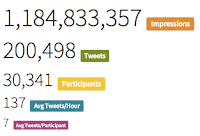ONC Challenge Grant
In July, ONC challenged the health IT community for innovative ideas for apply blockchain. Blockchain, first introduced in 2008, is the technology behind bitcoin.
The core capabilities of blockchain - a secure way to share data and track transactions - address the hot healthcare topics of interoperability and cybersecurity.
 |
Upcoming Workshop
ONC will be co-hosting a workshop with NIST, September 26 and 27, 2016 to explore blockchain in healthcare and where the selected white papers will be presented.Healthcare Needs Better Connections
There are a wide variety of constituents in the health and healthcare ecosystem. The many ways they connect today is staggering, from dedicated point-to-point solutions to specialized clearinghouses to public Internet.
Each participant has its own surrounding support network of services, supply chain, and numerous intermediaries. There are many opportunities to simplify the existing tangle of connections.
Each participant has its own surrounding support network of services, supply chain, and numerous intermediaries. There are many opportunities to simplify the existing tangle of connections.
Blockchain Attributes Address Healthcare Needs
Blockchain brings together cryptography, peer-to-peer networks and highly distributed database technologies. This is the latest version of "the network is the computer," where now "the network" can take on many of the functions of a centralized clearinghouse, potentially replacing not just the centralized servers but also the centralized organization with a hyper-distributed model.Key attributes of blockchain include
- Trusted Identity
- Smart Contracts
- Shared Ledger
- Non-repudiation
- Highly Distributed Redundant Data Store
The Value of Hype: Vision and Alliances
Hype is an indicator of new activity. That activity may or may not provide real value. Blockchain is the latest technological shiny object that has captivated the attention of innovators and early adopters. That attention may bring needed resources to address real problems.According to its proponents, blockchain has the potential to disrupt current processes and organizations, to create new wealth and shift the centers of power. Bitcoin and other crypto-currencies, despite ups and downs, are getting attention from financial institutions and governments as a means to improve trust, transparency and operational efficiency, especially with respect to clearinghouses, back office processes, audit and regulatory compliance.
Let's not lose sight of the efforts already in place to provide better connections across the health ecosystem: the well established query capability of eHealth Exchange, the patient identity management in Commonwell, the broad adoption of ePrescribing using Surescripts, and the resilience of several of the state and local health information exchanges (HIE's). As we learned from Direct Trust, taking Direct Project from prototype to production, required more than just a core technical capability.
The opportunity for innovation and the fear of disruption are generating a lot of attention. This in turn is leading to visions for a near term future with lower transaction costs and greater data fluidity. It has the potential to produce new value models. New alliances may form to harness the potential and old adversaries may work together. This is the case in financial services and may also apply to healthcare.
Open Questions in Healthcare
Regardless of technology, some areas, already active in health IT, need further work.- Value - Is there a direct line of sight from the technology to real value?
- Value from information
- Value to the end user
- Value to the individual patient
- Monetize data and information flow
- Use Cases / Process Improvement
- Applied Technology
- Workflow - Does it fit with what the user is doing?
- Data - Is the information useful to the action at hand?
- Analytics - Has the relevant information been brought forward?
Perhaps the threat of disruption will motivate entrenched organizations to move forward on areas of cooperation, common standards, improved care coordination and research. These all areas where coming together and working together may be more important than the underlying technology.
Assessing Progress
Here are four key questions as we look for indicators of change.- Early Success: Does blockchain solve a specific, "micro-"problem in a way that has less friction, less cost, less overhead, is overall easier to implement and use, than current solutions to that problem?
- Scale: Do the early success grow beyond the pilot user community?
- Partnerships: Do new alliances form around blockchain and successfully address a previously intractable problem?
- Scope: Does blockchain become a broad platform that enables a range of solutions or does it remain in a narrow niche?









